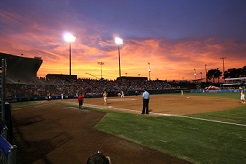
One will “leave an impression on your heart,” says the director of sports business for the Oklahoma City Convention and Visitors Bureau, while the other allows visitors to “see the transformation we’ve made as a city.”
Indeed, thanks to an epic decades-long capital improvements plan, Oklahoma City has moved well beyond its cowboys and Indians heritage — although it’s been home to the National Cowboy & Western Heritage Museum for more than 60 years — and hosts a wide variety of sporting events every year.
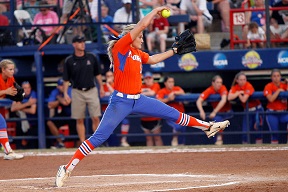 “People are really surprised,” Hollenbeck says. “We are still very much cowboys and Indians. That’s where we came from, and we don’t discourage that. But we’re also a vibrant, contemporary city located smack-dab in the middle of the country. People come here and they say, ‘It’s just awesome.’ I smile and say, ‘I know.’”
“People are really surprised,” Hollenbeck says. “We are still very much cowboys and Indians. That’s where we came from, and we don’t discourage that. But we’re also a vibrant, contemporary city located smack-dab in the middle of the country. People come here and they say, ‘It’s just awesome.’ I smile and say, ‘I know.’”
Softball, wrestling and paddlesports events have become major draws. USA Softball is headquartered in Oklahoma City, and the Women’s College World Series is held every year at the ASA Hall of Fame Complex-OGE Energy Field. Oklahoma City University has been a pioneer in developing and hosting women’s wrestling events, and a $45.2 million whitewater rafting and kayaking center opened in May. Its first event? The Olympic trials.
Oklahoma City also is home to the National Basketball Association’s Thunder at Chesapeake Energy Arena, a Triple-A affiliate of Major League Baseball’s Los Angeles Dodgers plays at Chickasaw Bricktown Ballpark, and the United Soccer League’s OKC Energy FC calls recently renovated Taft Stadium home.
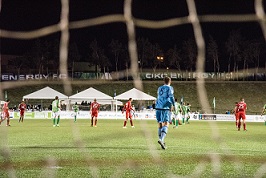 And let’s not forget that the most mileage along iconic U.S. Route 66 is located in Oklahoma, which makes that state’s capitol city even more of a destination. “People from all over come here,” Hollenbeck says. “Plus, we do really well pulling in quality sporting events for both women and men.”
And let’s not forget that the most mileage along iconic U.S. Route 66 is located in Oklahoma, which makes that state’s capitol city even more of a destination. “People from all over come here,” Hollenbeck says. “Plus, we do really well pulling in quality sporting events for both women and men.”
Festive Fun
RIVERSPORT Rapids, only the third manmade whitewater facility in the country, is Oklahoma City’s most recent competition venue. To celebrate its grand opening in May, the center hosted the USA Canoe/Kayak Olympic Trials for whitewater slalom, as well as the USRowing Central District Youth Championships, which brought in more than 1,500 high school athletes from nine states.
“They opened with a bang, that’s for sure,” Hollenbeck says.
Designed for whitewater rafting and kayaking at all levels, RIVERSPORT Rapids is used primarily for recreational kayaking, rafting and tubing but also will host more competitions. “We’ve had people come from all over the world and say it mimics the natural environment really well,” Hollenbeck says.
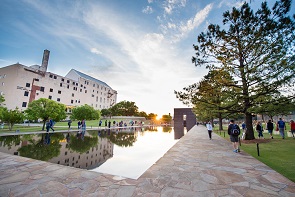
As part of the Olympic Trials, RIVERSPORT Rapids was one of six stops leading up to the Rio 2016 Olympic and Paralympic Games on the Road to Rio Tour presented by Liberty Mutual Insurance. Tour elements included interactive sports participation opportunities; virtual-reality experiences that allowed fans to experience pole vaulting and gymnastics; chances to meet Olympic athletes; and live entertainment all weekend.
Equally as festive is the Women’s College World Series, held every spring at USA Softball headquarters. Hollenbeck has met fans that make the trek every year, as well as those who have the event on their bucket list. “They don’t care who those eight teams playing are,” she says. “They just want to come here and be part of the scene.”
Oklahoma City has hosted the WCWS every year but two since 1990, and a 2015 contract renewal with the NCAA will keep the Series there until 2035. Recent renovations to the ASA Hall of Fame Complex-OGE Energy Field include upgrades to locker rooms and concessions areas, and the facility now offers 5,000 permanent seats with room for 4,500 more temporary bleachers in the outfield. A third phase of improvements will add 4,000 more seats. The stadium also hosts dozens of events for women, men and youth players throughout the year.
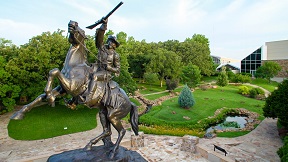
“Being able to play here is such a big deal,” Hollenbeck says about the complex. “It’s like playing in Yankee Stadium or Fenway Park. The venue holds memories of all the great women who have gone before. Most NCAA championships move around and aren’t held in one permanent location like the Women’s College World Series.”
Filling A Wrestling Niche
Oklahoma City also has emerged as a leader in wrestling, particularly women’s wrestling. The Freede Wellness Center at Oklahoma City University, which seats almost 3,500 spectators, welcomes the largest wrestling tournament in the United States for high school and college females. Held in March, the Girls Folkstyle Nationals and the Women’s College Wrestling Association’s National Championship combine to bring in as many as 7,000 wrestlers.
“Coaches at Oklahoma City University saw a need and a niche,” Hollenbeck says, adding that a focus on women’s wrestling helped reinforce an already strong men’s wrestling program at the university. “Many of our female wrestling events have grown organically.”
Chesapeake Energy Arena hosted the NCAA Division I Wrestling Championships in 2014 and several other wrestling tournaments at all levels roll into the city every year.
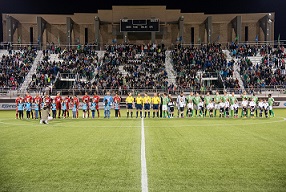
Marathon In Memoriam
Oklahoma City changed forever one mid-April morning 21 years ago when domestic terrorist Timothy McVeigh detonated a truck bomb in front of the Murrah Federal Building downtown. Now, every April, tens of thousands of runners from across the United States — some hoping to qualify for next year’s Boston Marathon — bow their heads for 168 seconds of silence prior to the start of the Oklahoma City Memorial Marathon, which is the Oklahoma City National Memorial & Museum’s largest fundraiser, accounting for about one-third of its annual budget.
“You can hear a pin drop,” Hollenbeck says, referring to that moment of silence. “People come every year because they love what the marathon stands for.”
The course begins at the site of the tragedy, and runners wind through the Capitol campus and Oklahoma City’s historic neighborhoods, ending at the Gates of Time — which permanently frame the moment of destruction at 9:02 a.m. Along the way, runners pass 168 banners, each bearing one bombing victim’s name.
In addition to the Oklahoma City Memorial Marathon, the city hosts a 5K run almost every weekend, Hollenbeck says. That kind of interest in and dedication to running garnered the attention of the International Triathlon Union, which will bring the 2016 ITU Long Distance Triathlon World Championships to Oklahoma City in September. Elite and age-group triathletes compete for world titles on a course that includes a 4-kilometer swim, a 120-kilometer bike trek, and a 30-kilometer run. The event marks only the third time the ITU Long Distance Triathlon World Championships have been held in the United States, and the first since 2011.
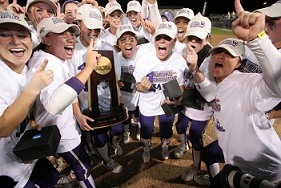
Always Under Improvement
Much of Oklahoma City’s appeal as a sports destination can be attributed to MAPS 3, the third phase of a capital improvements program funded by a one-cent, limited-term sales tax used to pay for the construction or renovation of debt-free projects designed to improve quality of life for residents and visitors. That includes sports, recreation, entertainment, cultural and convention facilities.
An acronym for Metropolitan Area Projects, MAPS began in 1993 and has revitalized the city with the addition of such sports attractions as the Chesapeake Energy Arena, Chickasaw Bricktown Ballpark and portions of RIVERSPORT Rapids. The Bricktown Water Taxi that Hollenbeck recommends to visitors wouldn’t exist without MAPS, either.
“The transformation of Oklahoma City from before the original MAPS to now MAPS 3 is integral to our transformation as a sports city,” Hollenbeck says. “Everything from water in the Oklahoma River — an original MAPS project that helped make OKC an Olympic training site — to building the Chesapeake Energy Arena, where the OKC Thunder play, has put OKC and sports on the international map. It’s been amazing to be a part of the process.”


There are no comments
Please login to post comments